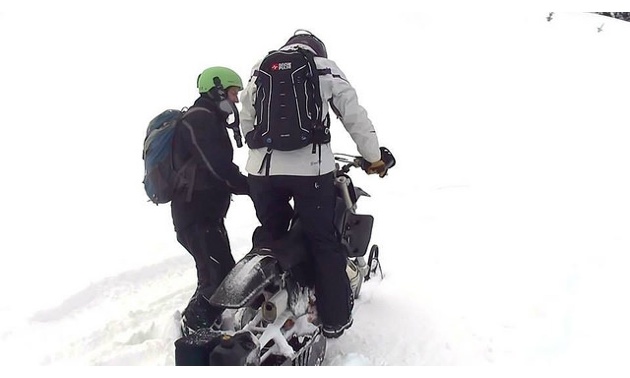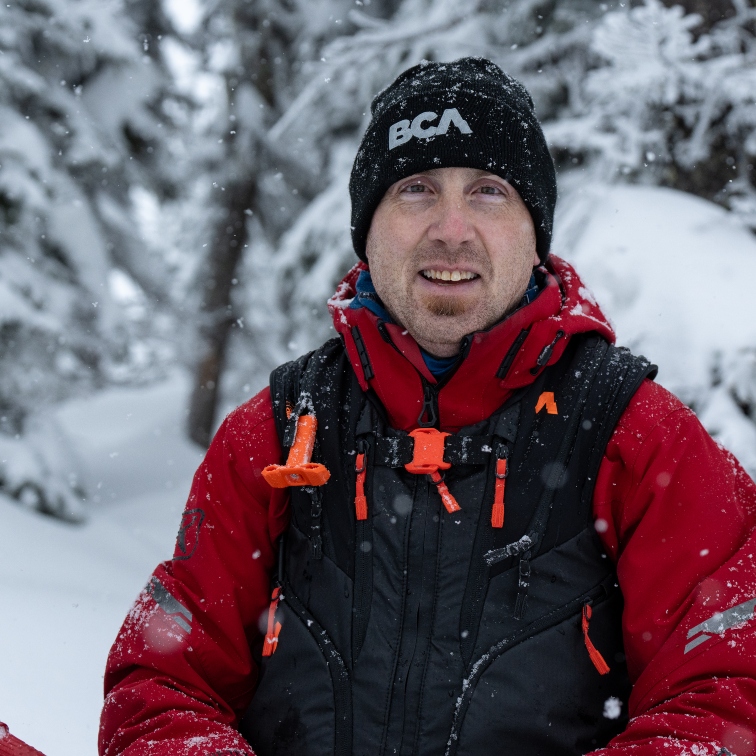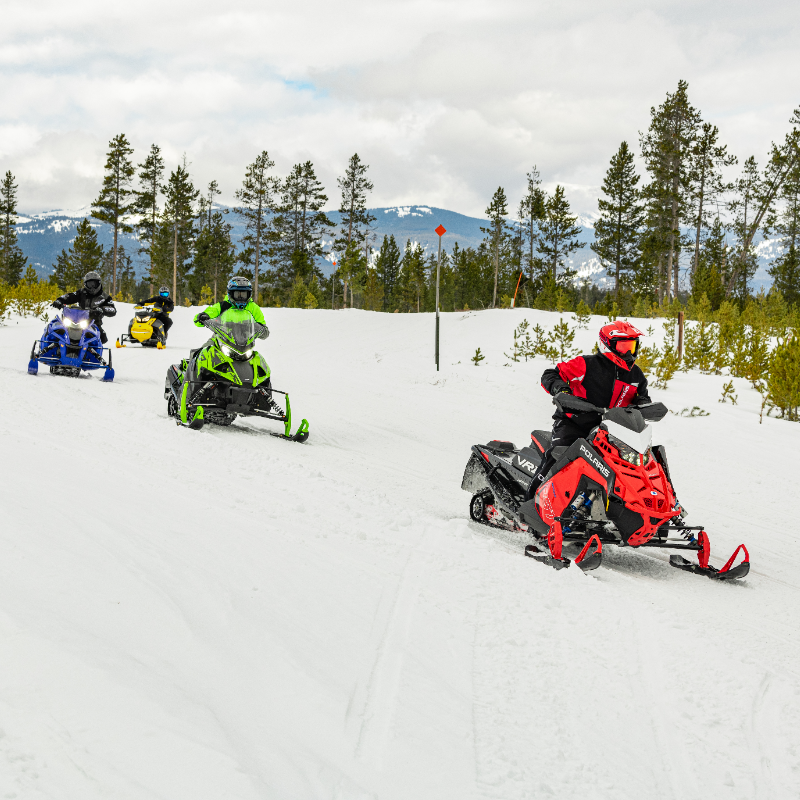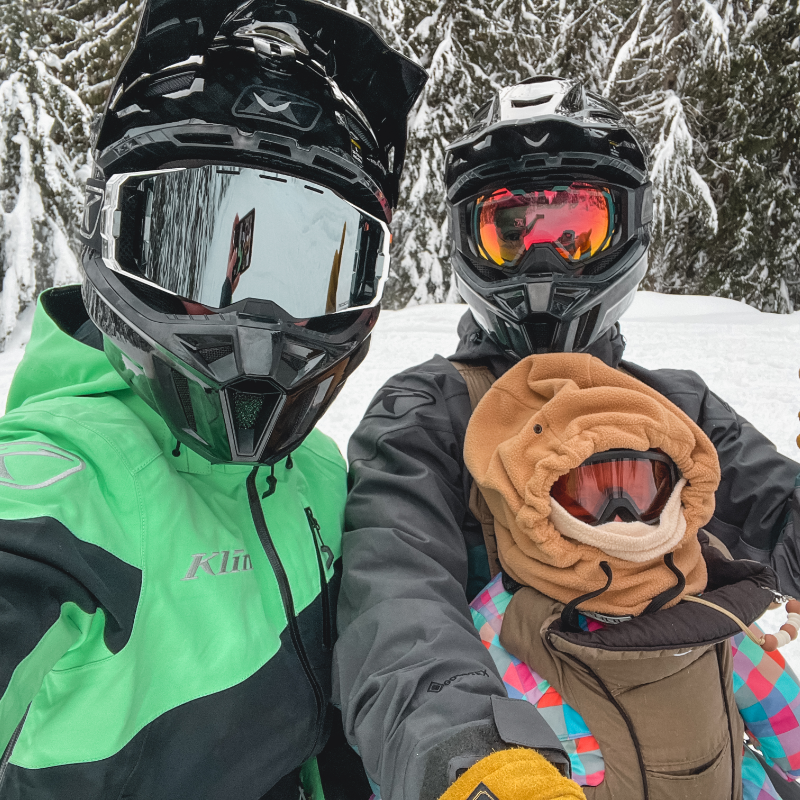I look at the eager eyes before me. Another new rider, excited to venture forth into the world of snowmobiling. Brand new, he perches unnaturally on his snowmobile, trying to get a feel for the powerful machine beneath him. His mind is filled with visions of carving deep dry powder and the endless views from high atop a secluded mountain range. My mind is not quite so picturesque, for I am sobered by the intense responsibility of mentoring a new rider. I liken it to the feelings of raising a child. While he/she may be eager to play and have fun, the youngster is completely unaware of the full potential for injury and death. We as the parent, must ensure safety at all times.
Mentoring is a huge responsibility, never to be taken lightly. While the new rider is filled with eager anticipation, the mentor is calculating every worst-case scenario possible, staying a step ahead of the game to ensure safety. The mentor has the responsibility of maintaining the positive momentum of the newbie's learning experience, sharing the potential dangers in a way that is real, but not discouraging. The mentor has the weight of the mountain on her shoulders.
This past season, with snow conditions continually sketchy due to a persistent weak layer in the snowpack, I opted out of many group rides. I had visions of the worst-case scenario, with wayward riders darting off into areas unsafe, triggering slides, then the ultimate fear, death. Avalanche conditions play a huge role in my decision-making, mentoring or riding with my sled friends. In my mind, life is far too precious to play Russian roulette with a large group of inexperienced riders in the mountains so I opted to selectively mentor one-on-one rather than to bring a large group of newbies into the hills. Can it be done safely even during extreme conditions? Yes, it can, but keep in mind the intense responsibility each group of new riders brings.
You can’t anticipate some situations . Expect the unexpected, and deal with each situation with a calm, cool but very assertive manner. I had a very green rider pop up onto an active logging road even after we discussed at length the dangers of the logging road. He was unable to turn around. Swiftly, I had him get off his machine and go to safety while I went and turned his snowmobile around on the ice-covered road, on a blind corner nonetheless.
It was a mistake - and mistakes will happen but sometimes people simply do not know what they don’t know. This rider had no idea that an ice-packed road would provide no traction whatsoever creating a potentially deadly situation. In his mind, he was simply going to turn around and get back into the meadow we were playing in. Experience is a great learning tool.
Communication is key
I have a very distinct set of hand signals to incorporate into the trail signals most commonly used. A finger slice across my throat means kill your engine immediately. A fist straight up in the air means stop NOW, which is especially useful when newbies attempt to dig their track into China when they feel the beginnings of a stuck. If I roll my hand forward with index finger pointed in a circle that means keep 'er moving... gain some speed. A flat palm down pumping up and down says tap 'er cool baby... slow down. Thumbs up means I’m asking if you are ok; at this point, understand that I want complete honesty. Finger pointing up over my head in a big circle says do it again, whatever obstacle course I had you just run through, do it again. Two fingers pointing at my eyes means watch me and wait for a signal. Most of these signals were either taught to me by my oh-so-patient husband or created by us so we could communicate non verbally. We have other signals created for use in frustrating situations, but that will be for another story.
I always begin with a pretrip talk and safety orientation. The eager newbies listen to my words carefully, but if there is one hint of them drifting off into disinterest, my lesson is over. I am setting ground rules quickly, somewhat bursting the bubble of giddy glee. Reality is that you must make wise choices or you could die. That is not a pretty picture, but it is one that is a reality when you play with the beast of winter. Dressing appropriately is a must. I have redressed many a rider who was grossly underprepared for winter sledding conditions. One would think that being underdressed was the problem, but much of the time overdressing in layers of thick cotton was the culprit. “Cotton kills” I tell students in schools, letting them know that cotton is probably the worst choice for winter warmth because it soaks up sweat like a sponge, leading to hypothermia. Redressing, complete with safety gear and life-saving essentials, is a part of going out with me, even if we are only going a few kilometres above my home.
Zero tolerance policy
I am quite clear that I have no tolerance for ego or daredevil-like mentality if you are learning from me. Step by step, we will proceed through basic techniques of sled control; and learning, however, if at any moment my newbie feels the need for reckless speed or ridiculous behaviour without machine control, I am done. We will be going back home. I will keep you safe - this I promise - but we must have complete trust and understanding. If I feel that we have had enough, we will be done. Many lessons have ended after two hours of riding simply because my newbie was exhausted, both physically and mentally. I make the choice to end on a high note, knowing that fatigue is a precursor to rider error.
Taking my children up into the mountains is far less stressful. They see me as Mom, or Momma Bear, if they push hard enough, and they have the ultimate respect and trust for my words. They listen and really work hard to respect my boundaries. Adults can be a different beast entirely. The illusion of dangling like Burandt and rocking their snow machine like a pro ends quickly as brand new, never used before muscles scream for mercy. What is this countersteering you want me to do? Really? Turn my skis in the opposite direction I want to turn? What is this witchcraft? Their adult minds play tricks on sled skill basics, creating much repetition in learning. Children will listen, adults... not so much.
Along with my personal parenting philosophy, my mentoring style has very little tolerance, ok, zero tolerance, for hissy fits and temper tantrums. That type of behavior will most certainly result in heading home. It is not only incredibly immature but it is potentially deadly. A temper tantrum on the hill tells me the individual is out of control, unable to think and act clearly. I don’t care if you are a grown man weighing 109 kilograms (240lbs) or a 16 year old girl weighing 45 kilograms (100lbs) a temper tantrum will result in me ending all fun for the day. I will watch and monitor your mood. I will set you up for success while pushing your boundaries, but again, above all else, I will keep you safe.
I will make you stay hydrated, and I will watch for signs of fatigue, dehydration and exhaustion. If your hands are shaking from adrenaline, I will give you time to gain composure before moving on. If I sense you are frightened, I will stop to discuss the situation and ask for complete honesty. I will keep not only your body safe, but your mind at peace. I have doubled and even tripled up riders to get them off the mountain when a terrified rider realized although he had dreams of snowmobiling, his extreme terror of heights created a situation that sent him into a complete anxiety attack. I don’t mind going back for a sled, and often my kids are there to help me. My mentor zone is very close to my home, allowing me the resources and people to deal with all situations.
Doubling a rider is not a fun situation. Newbies have compassion and a clear understanding for how difficult this task truly is. Again, the fantasy vision of riders peacefully doubling back in the 1970s on hardpacked trails is far different from navigating mountainous terrain with an extra person on-board. It is difficult, uncomfortable, and very taxing. It isn’t fun, but for a mentor, it goes with the territory. Sometimes, we are taking a rider off the hill; and other times, we are teaching skills such as carving and tree riding, giving the new rider an up-close-and-personal lesson on the mechanics of the skill. Many new riders are unbalanced on the machine, leaning when they shouldn’t or mashing into the throttle unexpectedly while the mentor tries to keep the situation under control.
Respect the mentor
As a mentor, I will laugh and have fun, but be clear, the mind of a mentor is never truly relaxed, watching for weather fronts and signs of wildlife. A moose in the wrong situation can pose as much danger as a storm front sweeping a blizzard through your ride zone. Continually scoping the terrain, I look at it not through the eyes of an experienced rider who can navigate challenging terrain, but through the eyes of a newbie, who may find challenge around every corner. The mentor has to think like a newbie, understanding what could potentially trigger fear or uncertainty, and help the new rider succeed.
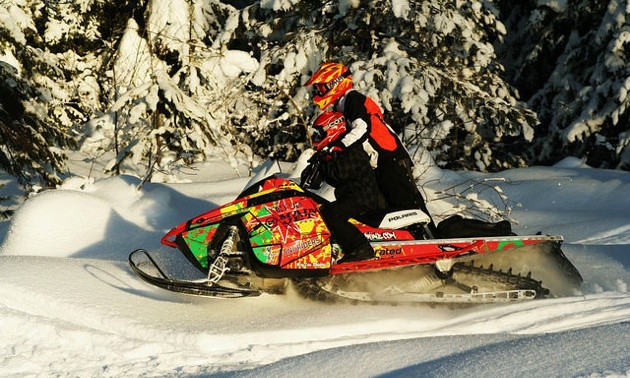
I have learned from my mistakes, so you don’t have to. Through the years I have made many choices that have humbled me. I will be the first to admit that I am not perfect, which is why I’d rather you not repeat my poor decisions. I share, in honesty, times that I have potentially put myself in harm's way, or worse, others. I didn’t start off with a mentor. I started with a machine, and that was about it. I started with no knowledge of safety or stewardship. I started with no understanding for basic skills. Pull and go was not the right way to learn.
Never take for granted the people who choose to reach out and mentor new riders. Be very respectful of what you ask of them. They need downtime: time to go out and simply ride without the burden of another life on the line. I recognize the fact that inexperience can be a liability. In my eyes for my husband is one of the most phenomenal mountain riders on the planet, but sometimes he will go on rides that are far above my head. On rides so technical, he’d fear for my safety instead of concentrating on his own navigation. Every mentor needs a break and the opportunity to ride unhindered because this is what fuels her passion for the sport. Newbies respect this, even if their sled mentor is a husband, boyfriend, sister or brother. Mentors need time away to refuel, which will make them that much more patient with someone growing as a rider.
Mentoring is a key component of our sport. For the mentor, it is rewarding but far from relaxing. It is a way for us to grow snowmobiling in a safe and responsible way.
